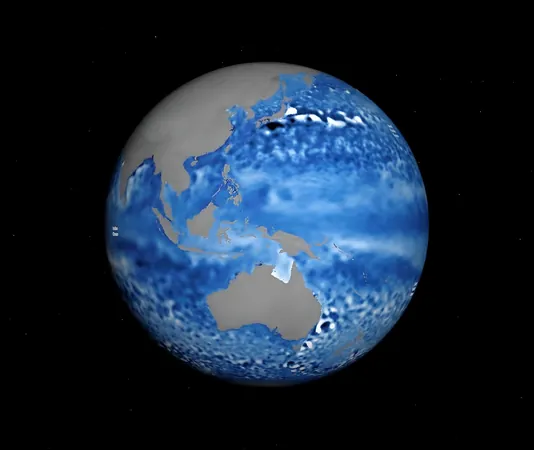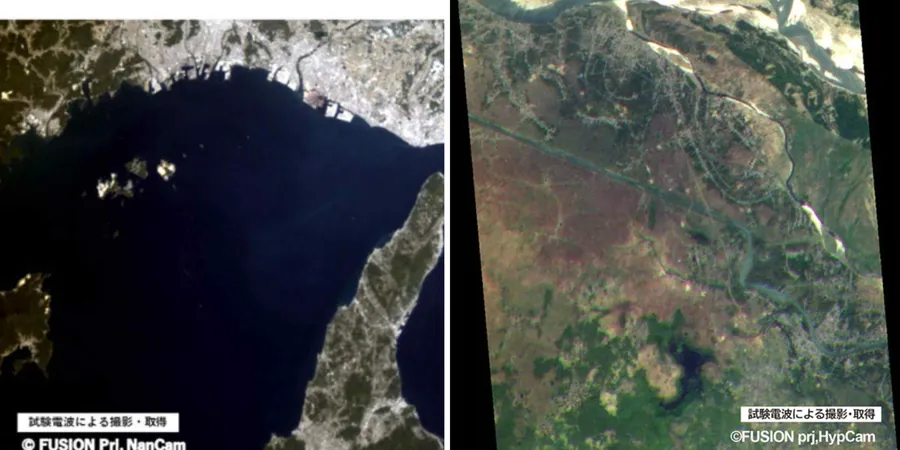
NASA's Revolutionary Satellite is Transforming Our Understanding of Ocean Currents
2025-05-17
Author: Daniel
When you think of the ocean, do vast waves come to mind? Think again! Exciting discoveries reveal that some of the ocean's most crucial activities are happening on a much smaller scale.
Thanks to the groundbreaking Surface Water and Ocean Topography (SWOT) satellite, researchers are now able to visualize and analyze the ocean’s tiny waves and swirling currents like never before. This newfound clarity is revolutionizing our understanding of marine life.
Unveiling the Power of Tiny Ocean Features
In a stunning collaborative study led by NASA and Texas A&M University, scientists have tapped into the SWOT satellite's capabilities to explore submesoscale features—tiny ocean eddies and waves often just a mile wide. Despite their size, these phenomena play a monumental role in the movement of heat and nutrients across marine ecosystems.
Even though scientists have been aware of these small features for decades, previous instruments, from ship-based tools to older satellites, only captured fragmented data. The SWOT satellite bridges this gap with precise, two-dimensional images of the ocean’s surface. Matthew Archer, an oceanographer at NASA's Jet Propulsion Laboratory, emphasizes the importance of these submesoscale features, noting their critical role in both ocean dynamics and climate interaction.
How Submesoscale Features Affect Our Planet
These seemingly insignificant currents actually drive the vertical movement of heat between the ocean and the atmosphere. In fact, submesoscale eddies can transport heat up from the ocean depths to the surface, directly impacting atmospheric temperatures. And it's not just heat; nutrients vital to marine life also rise through these channels, nourishing organisms at the ocean's surface.
Mapping the Hidden Currents
What's even more impressive? The SWOT satellite doesn’t just track water movement; it measures ocean surface heights, allowing scientists to estimate force and energy levels within these currents. With this data, researchers can analyze the speed at which water—and with it, heat and nutrients—moves.
Jinbo Wang, a Texas A&M oceanographer, highlights the significance of this new understanding, stating that small changes in ocean factors can lead to substantial alterations in weather patterns and even global climates.
Revolutionizing Ocean Research
In practice, scientists have already put SWOT to the test by examining a swirling eddy within the Kuroshio Current near Japan. The satellite successfully measured the vertical water movement within the eddy, estimating speeds of 20 to 45 feet per day—an essential breakthrough for understanding how deep-sea energy reaches the ocean's surface.
Further studies revealed another fascinating find: an internal solitary wave in the Andaman Sea that boasted twice the energy of typical tides in that region.
The Future of Ocean Modeling
SWOT's rich data is a game-changer for ocean circulation models, which have historically focused on large features. As study co-author Lee Fu points out, this new information will help researchers refine their models to better account for smaller scale behaviors.
As researchers integrate SWOT data into models such as NASA’s ECCO (Estimating the Circulation and Climate of the Ocean), we are one step closer to predicting how the ocean ecosystem will react to global changes.
A New Era of Ocean Exploration
With the SWOT satellite redefining ocean research, we stand at the forefront of a new era in understanding how our oceans interact with the climate. Stay tuned as this incredible technology continues to unveil the mysteries of the deep!




 Brasil (PT)
Brasil (PT)
 Canada (EN)
Canada (EN)
 Chile (ES)
Chile (ES)
 Česko (CS)
Česko (CS)
 대한민국 (KO)
대한민국 (KO)
 España (ES)
España (ES)
 France (FR)
France (FR)
 Hong Kong (EN)
Hong Kong (EN)
 Italia (IT)
Italia (IT)
 日本 (JA)
日本 (JA)
 Magyarország (HU)
Magyarország (HU)
 Norge (NO)
Norge (NO)
 Polska (PL)
Polska (PL)
 Schweiz (DE)
Schweiz (DE)
 Singapore (EN)
Singapore (EN)
 Sverige (SV)
Sverige (SV)
 Suomi (FI)
Suomi (FI)
 Türkiye (TR)
Türkiye (TR)
 الإمارات العربية المتحدة (AR)
الإمارات العربية المتحدة (AR)